Hibiscus Tea Recipe
This Hibiscus Tea recipe is easy to make and delicious to drink. It is rich in vitamin C and antioxidants, plus it tastes great. Learn how to make it fresh and serve it hot or cold.
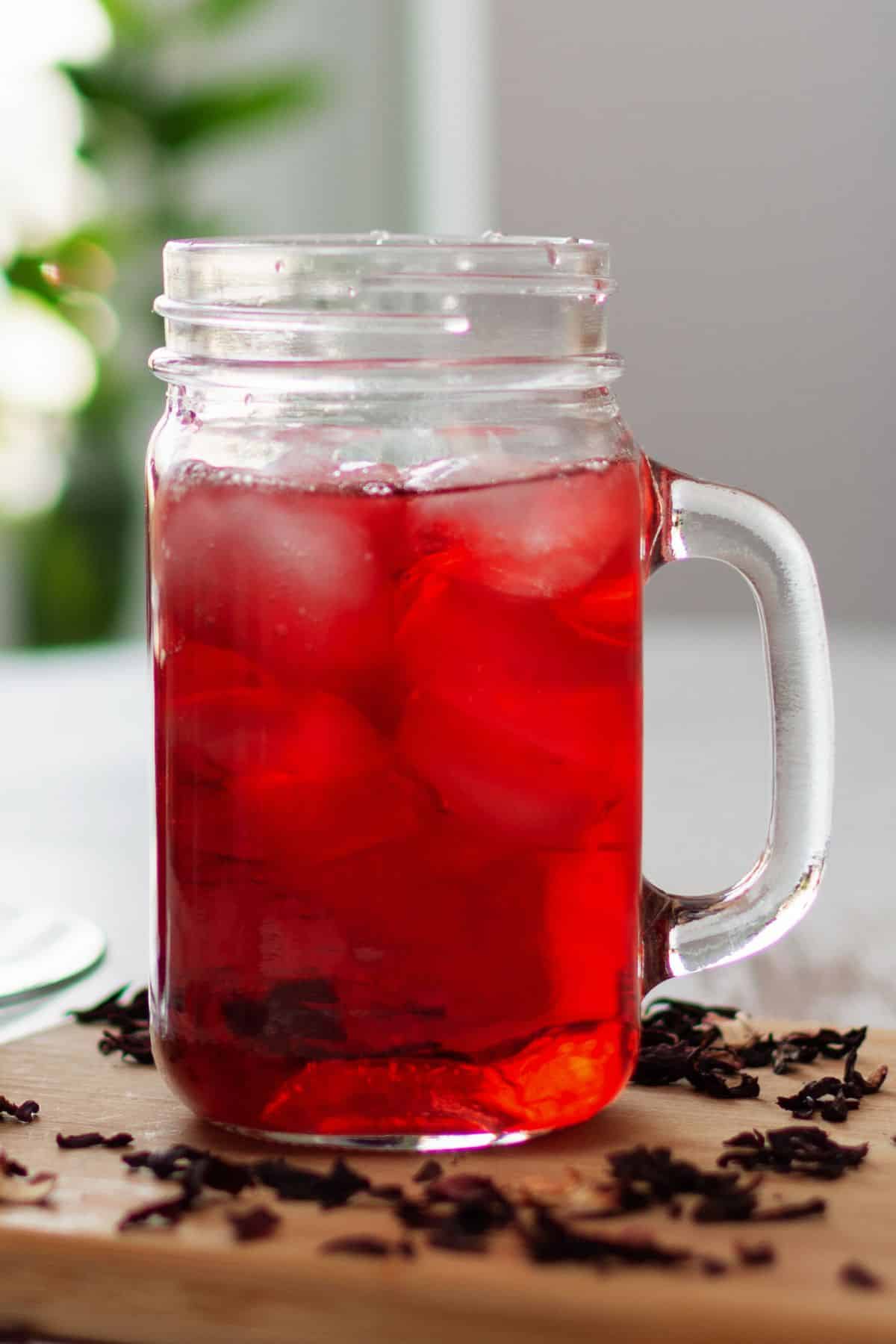
Did you know that you can make tea out of hibiscus flowers? It has an exotic flavor and packs a healthy punch – and it’s a beautiful, bright red color! Hibiscus tea is naturally caffeine-free and contains zero calories.
You can enjoy your tea hot or icy cold and adapt the flavor to suit your taste. If you love hibiscus flowers like I do, it’s a great idea to try this refreshing and healthy tea.
Hibiscus flowers contain antioxidant compounds called anthocyanins. These compounds give red, blue, and purple berries and other foods their vibrant color and have all kinds of health properties. It may reduce inflammation, prevent type 2 diabetes, and improve heart health. Anthocyanins may even help you to lose weight!
I first tried hibiscus tea on a trip to Mexico. In Latin America, it’s known as “Agua de Jamaica,” and is made with dried hibiscus flowers, water, sugar, and sometimes additional flavorings like ginger and cinnamon. It’s served chilled from street carts – just what you need in the hot Mexican sun!
As long as you don’t use too much sugar, hibiscus tea is an excellent herbal tea option for people looking for fresh and healthy alternatives to other sugary beverages.
Hibiscus Tea Benefits
- Hibiscus tea can be a warm and comforting drink on a cold day or a refreshing thirst quencher on a hot day.
- Hibiscus flowers are filled with nutritional goodness. Hibiscus tea is packed with Vitamin C and supports the immune system.
- The color of this brew is simply stunning, making it an excellent option to serve to guests. It’s also quite exotic, so it can be a great conversation starter at a gathering!
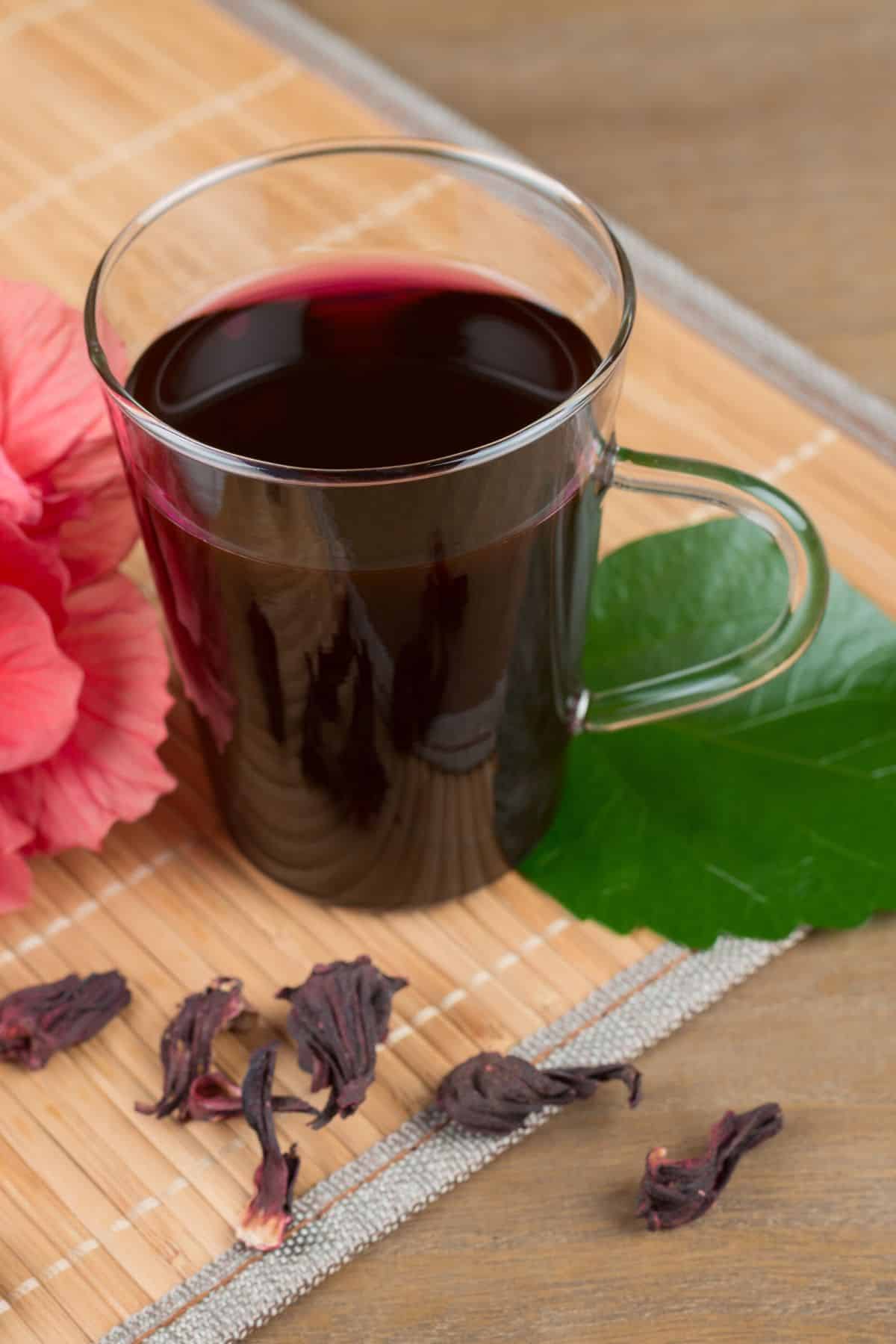
What You’ll Need to Make This Recipe
Hibiscus tea is easy to make and doesn’t require any fancy equipment. I bet you have everything you need in your kitchen right now.
1. Glasses or Cups
You can serve and enjoy cold hibiscus tea in any glass and warm hibiscus tea in any cup or mug. I prefer using transparent glasses, cups, or mugs. The color of the tea is so vibrant and beautiful that you’ll want to see it and show it off.
2. A Long-Handled Pot or Medium Saucepan
If you have a long-handled pot with a spout, it’s your best bet for making hibiscus tea because you’ll have to pour it through a strainer. If your pan doesn’t have a spout, just be careful when pouring the hot tea over the strainer.
3. A Strainer or Colander
Use any type of strainer or colander to separate the flower petals from the tea. A colander will do just fine if the holes are not too big.
4. A Pitcher or Jug
You can make a batch of hibiscus tea and keep it in the fridge in a pitcher or a jug for up to five days. For best flavor-retaining results, use a glass container.
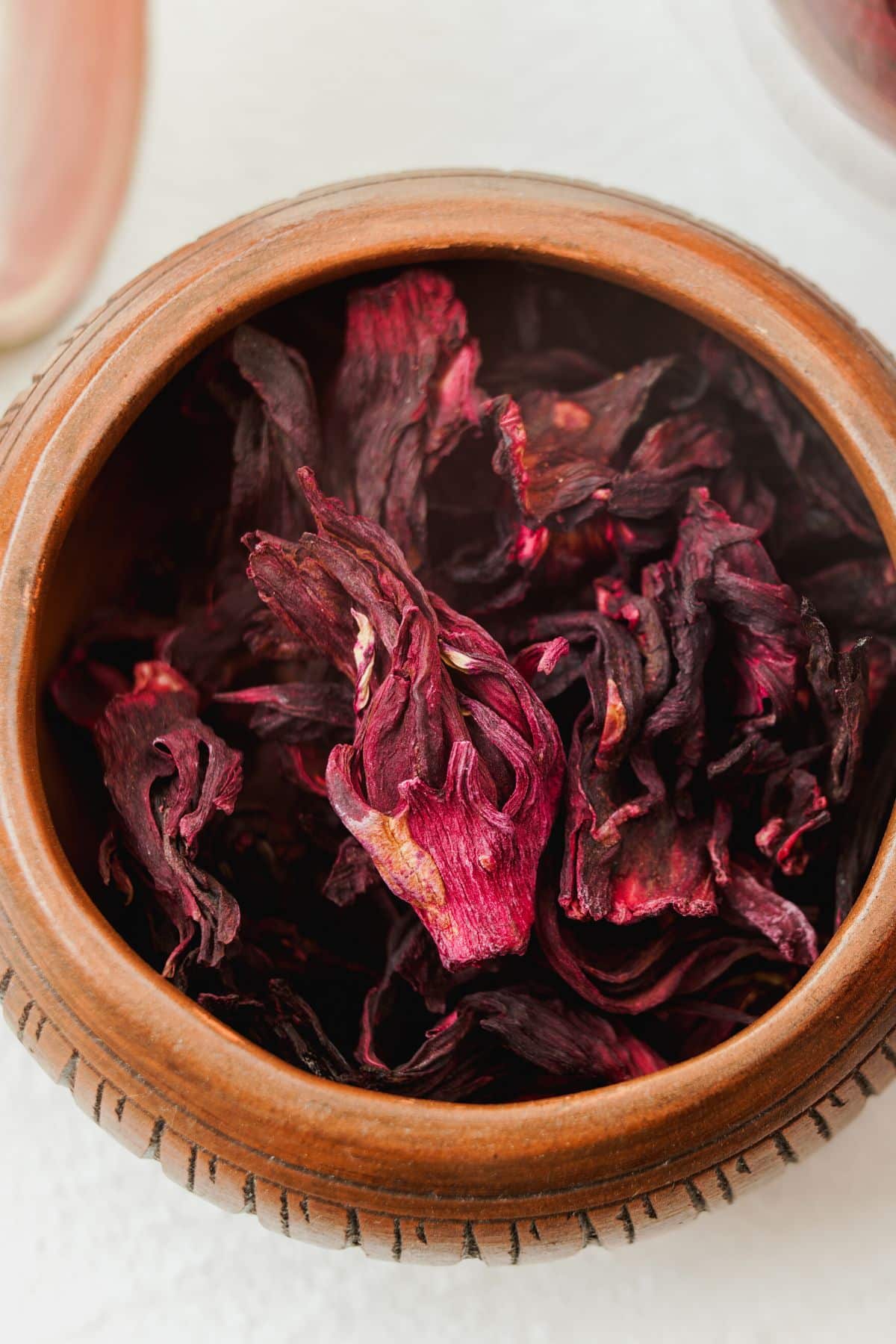
Ingredients and Substitutes
Hibiscus tea tastes similar to cranberry juice, but you can adjust the flavor to suit you with different sweeteners and other ingredients. Here are some tips and tricks to help you make the best hibiscus tea.
Hibiscus Flowers
If you live in a tropical area, it’s easy to find hibiscus flowers. My neighbor has a huge bush with pink hibiscus flowers. You can even plant hibiscus in your own yard or in a pot and have a supply on hand.
If you don’t have access to fresh hibiscus flowers, you can order packages of the dried flowers in health food stores, your local grocery store, online, and sometimes in Hispanic stores, Mexican markets, or specialty tea stores. Look out for a label that says, “Flor de Jamaica” or Jamaica tea.
I like this brand of dried hibiscus leaves for making tea. You can also buy hibiscus tea bags, but I think using the hibiscus petals is so much better in terms of freshness and flavor.
Freshly Squeezed Lime Juice
The lime juice will balance the sweetness of your sweetener and the natural tartness of the hibiscus flowers. It’s best to use freshly squeezed lime juice with your hibiscus tea. However, if you don’t have limes available in your area or are out of season, buy high-quality bottled lime juice without any added sweetener.
Another option is to substitute the lime with lemon juice. It will give your tea a slightly different flavor and will change the color to a luscious pink!
Sweetener
If you choose to sweeten your tea, you can use any sweetener you enjoy. The recipe calls for ¼ cup of honey, but you can use as much or as little as you like. If you enjoy tart flavors, feel free to leave out sweeteners altogether.
I like using honey because I think it complements and balances the tartness of the hibiscus. You could try maple syrup for a slightly smokey undertone, agave syrup, or stevia.
See my list of the best natural substitutes for sugar.
Ice
If you want to enjoy your hibiscus tea icy cold, you can add ice cubes when serving it. Brew the tea and let it cool down or chill it in the refrigerator before adding the ice (similar to my method for making iced coffee).
I like freezing mint leaves in ice cubes for my iced tea. It looks simply beautiful, and if the ice melts, you’ll have an extra burst of flavor in your tea!
Another option is to freeze different colored melon balls or use frozen grapes instead of ice. It will give your tea an interesting look, and the flavors will match beautifully!
Optional Additional Flavorings
This recipe is very versatile and forgiving. You can try adding lemongrass, lime slices, simple syrup, orange zest, mint, ginger, cinnamon sticks, or ground cinnamon to the tea.
Important Health Notes
People taking chloroquine, a medication for malaria, pregnant women or breastfeeding women, or people with blood pressure problems or diabetes should not drink hibiscus tea.
Although it is generally considered a super healthy drink, hibiscus may cause adverse effects in these people.
Recipe FAQs
Yes, it is! As with many types of food, the fresher it is, the better. If you have access to fresh hibiscus flowers, remember to clean them well. Remove the stems, leaves, and seed pods and use only the petals. Use around four times as much as you would if you’re using dried petals.
Yes, and it’s a great idea, so you’ll have a supply on hand throughout the year, even when the hibiscus is not in bloom. Simply remove the stem and stamen from each flower, and cover them with a muslin cloth, placing them on a drying rack for a few days in a well-ventilated area. Store your dried flowers in an airtight jar.
In general, you can enjoy one to two cups per day to enjoy the flavor and health benefits without risking overconsumption. Ask your healthcare professional if you have concerns about your personal situation.
There is no evidence that says it can help with weight loss, but it may if you don’t add too much sugar and you replace other sugar-sweetened beverages with this recipe.
Yes it can. There is research showing that drinking hibiscus flower tea can help reduce high blood pressure. Speak to your doctor, though, so he or she knows that you are using it for this purpose.
More Healthy Drink Recipes You Might Like
- Cucumber Ginger Lemon Water
- Iced Americano
- Sparkling Kombucha Lemonade
- Strawberry Mocktail
- Detox Tea Recipe
- Homemade Taro Milk Tea Recipe
- Vitamix Blended Orange Juice
Or, check out my entire index of beverage recipes.
Don’t Miss These Warming Drinks!
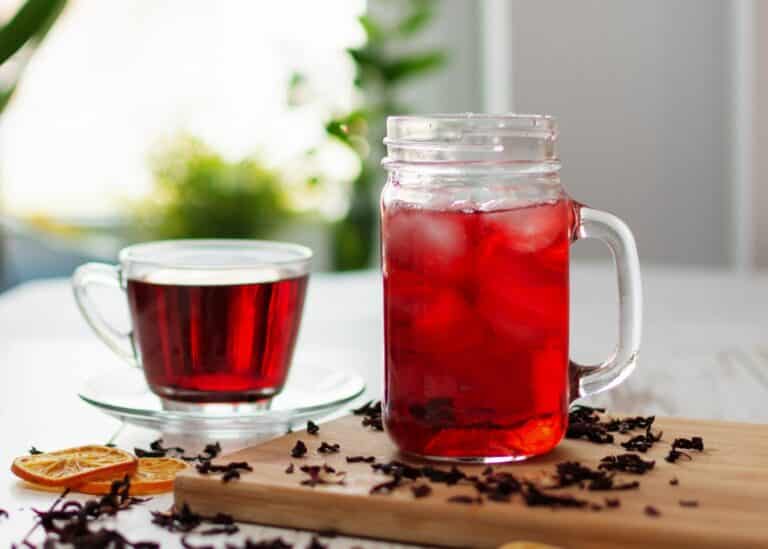
Hibiscus Tea Recipe
This Hibiscus Tea recipe is easy to make and delicious to drink. It is rich in vitamin C and antioxidants. Learn how to make it fresh and serve it hot or cold.
- Total Time: 20 minutes
- Yield: 8 1x
Ingredients
- 2 cups freshly plucked hibiscus flower petals or 1/4 cup of dried hibiscus flowers
- 8 cups water
- 1/4 cup liquid sweetener of your choice (I use honey, maple syrup, or agave)
- 3 tablespoons freshly squeezed lime juice (from about 1 1/2 limes)
- Ice cubes (optional, for serving cold)
- Optional additional flavoring. You could try lemongrass, orange zest, mint, ginger, or ground cinnamon
Instructions
- If you’re using fresh flowers, remove the green part of the flower attached to the stem and the thin thread-like tube in the flower’s center.
- Place the flowers in a pot with the water and bring them to a boil.
- When it starts boiling, turn the flame off and cover the pot.
- Add the optional additional flavoring if you’re using it.
- Let the tea steep for 15 minutes.
- Add the honey and lime juice and stir well.
- Strain the tea into a pitcher or a jug.
- Serve it warm or chill it in the refrigerator for an hour or two and add ice cubes when you serve.
Notes
- If you have access to fresh hibiscus flowers, remember to clean them well before making them into tea. Remove the stems, leaves, and seed pods and use only the petals. Use around four times as much as you would if you’re using dried petals.
- To dry your own hibiscus flowers, remove the stem and stamen from each flower, and cover them with a muslin cloth, placing them on a drying rack for a few days in a well-ventilated area. Store your dried flowers in an airtight jar.
- In general, you can enjoy one to two cups per day to enjoy the flavor and health benefits without risking overconsumption. Ask your healthcare professional if you have concerns about your personal situation.
- Prep Time: 5 minutes
- Cook Time: 15 minutes
- Category: Beverages
- Method: Hot water
- Cuisine: Healthy
- Diet: Vegetarian
Nutrition
- Serving Size: 1 cup
- Calories: 34
- Sugar: 8.8 g
- Sodium: 19.5 mg
- Fat: 0 g
- Saturated Fat: 0 g
- Carbohydrates: 9.2 g
- Fiber: 0 g
- Protein: 0.1 g
- Cholesterol: 0 mg
Don’t forget to join my newsletter list to get exclusive clean eating recipes and tips. The newsletter is 100% free with no spam; unsubscribe anytime.
About the Author: Carrie Forrest has a master’s degree in public health with a specialty in nutrition. She is a top wellness and food blogger with over 5 million annual visitors to her site. Carrie has an incredible story of recovery from chronic illness and is passionate about helping other women transform their health. Send Carrie a message through her contact form.


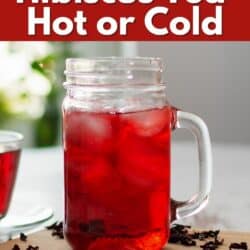
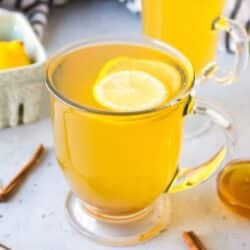
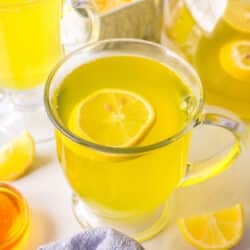
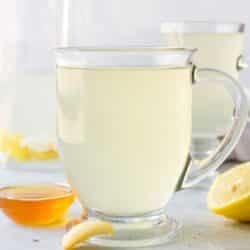
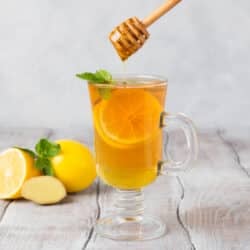


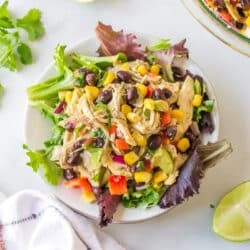
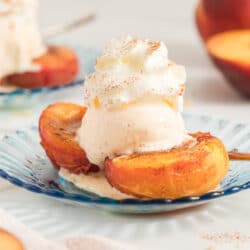
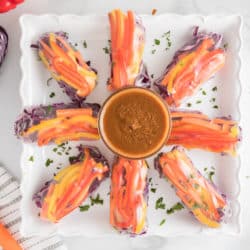
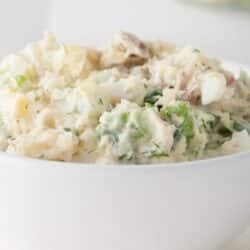
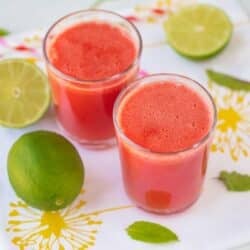
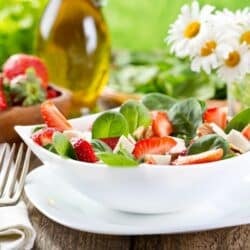
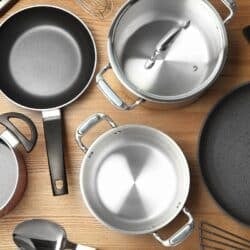

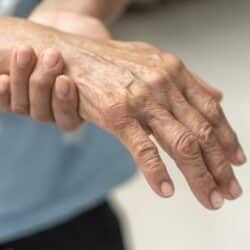

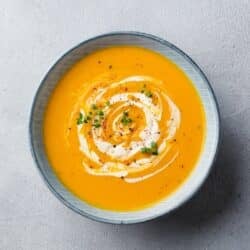
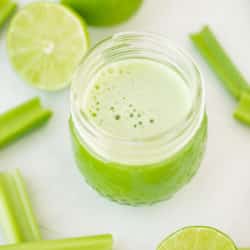


I love this recipe and the options you offered. I used dried organic hibiscus flowers with a cinnamon stick, a bit of honey and just a quick squeeze of lime. I might try another variation next time.
So glad you enjoyed! 🙂
I am new to your webpage and enjoy it very much. I am a longtime fan of hibiscus tea. However, I understand that only one variety of hibiscus produces the flowers used to create hibiscus tea (aka, agua de Jamaica), and that the flower is from the roselle Hibiscus sabdariffa. (See history and uses for this hibiscus flower at https://en.wikipedia.org/wiki/Hibiscus_tea).
I also want to mention that apparently, not all hibiscus varieties are safe for humans. (See HIBISCUS: TO EAT OR NOT TO EAT? at hibiscus.org), so I would avoid using unidentified hibiscus flowers as food.
Thank you for sharing this great info!
Hibiscus tea is actually an excellent method to reduce high blood pressire.
Scientific proof exists
Yes I linked to some research in the article!
I love this tea. The flavor takes some getting used to, but it’s amazing!!!